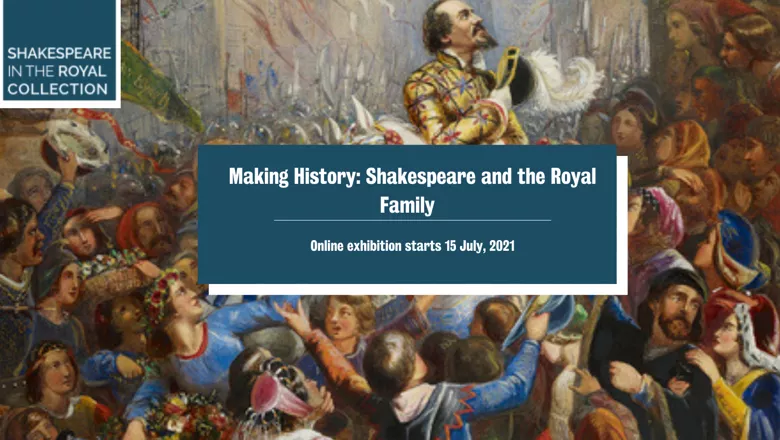The team of researchers from the AHRC funded Shakespeare in the Royal Collection project share their experiences of staging an online exhibition.

The 2020/21 Covid lockdown in the UK restricted access to archives, forcing arts and humanities scholars to conduct their research activities from home. As a result, some had to change the focus and methodology of their entire research projects.
Dr Sally Barnden and Dr Kirsten Tambling are researchers for the AHRC-funded 'Shakespeare in the Royal Collection' ('ShaRC') project, exploring the question "What has Shakespeare done for the royal family, and what has the royal family done for Shakespeare?".
The ShaRC team had already had to adapt to a new process of 'Material Research by Zoom' as a result of the initial Covid restrictions (which they discuss in detail here).
However, the pandemic also meant finding a completely different approach for one of their key project outputs: an exhibition of objects from the Royal Collection Trust, displayed at Shakespeare's Globe.
'We quickly realised that we couldn't do this in the way we had planned,' says Kirsten, 'and so we had to talk about alternative ways of exploring the material. An online-only exhibition was the obvious solution. But we were immediately worried about how we would be able to reproduce the experience of being in a space and seeing objects "face to face". Our object list included eighteenth-century miniatures – originally designed to be held in a hand as a love token – and blocks of wood associated with Shakespeare that had taken on almost mythic qualities for the people who first interacted with them. Their physical characteristics are part of their "aura", and we were worried about losing that.'
"As we originally conceived it, the scale and presence of the objects would have had a significant effect on how we told the story of Shakespeare and the royal family," Sally adds. "Alongside those intimate miniature portraits, we're displaying a pair of oil paintings—a three-quarter-length sketch, and a full-length painting nearly three metres high. In a real space, the contrast between those objects would have been striking. But in a digital space, the advantage is that smaller objects don't get lost, and we can make it possible for viewers to zoom in and examine them, perhaps even in more detail than would be possible in person."
In designing the online exhibition, in partnership with the digital media agency CogApp, the team decided to try to give a sense of the relative scale of the objects by 'floating' thumbnails in a series of digital 'rooms', rather than displaying them as a series of identically sized images.
They also began exploring certain objects in more detail through a series of short films, allowing visitors to get a sense of the objects' physical properties, and how they might originally have been handled. Meanwhile, three-dimensional visualisations and audio material produced by Martin Blazeby and NoHo helped showcase the team's researches into historic Shakespeare performances at Windsor Castle.
At the same time, the ShaRC team also found new advantages to the digital form. In particular, an online exhibition allows them to showcase objects from the Royal Collection which might not otherwise have been available – and to juxtapose them with objects in other collections around the world. 'The borrower pays all the transport and insurance costs in a physical exhibition,' says Kirsten, 'so some of the works we wanted from the USA might have been too expensive for us to borrow; others would have been too fragile to travel. So the online format allows the visitor to see pairings of objects that simply would not have been possible for us to achieve in a physical space.'
The other benefit of an online exhibition is, of course, that it is publicly and freely available to visitors from around the world. The online exhibition "Making History: Shakespeare and the Royal Family" will launch on 15 July, and you can sign up for a reminder here.






